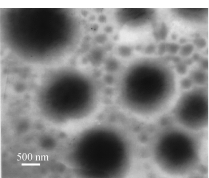化学学报 ›› 2011, Vol. 69 ›› Issue (15): 1803-1810. 上一篇 下一篇
研究论文
齐晓君1, 刘守信*,1, 刘腾2, 党莉1, 杨曦1, 雨薇娜1, 王红梅1
Qi Xiaojun1; Liu Shouxin*,1; Liu Teng2; Dang Li1; Yang Xi1; Yu Weina1; Wang Hongmei1

利用原子转移自由基聚合方法(ATRP)合成了组成递变的嵌段共聚物P(HEMA-co-DEAEMA)-b-PDEAM-b- P(DEAEMA-co-HEMA). 用FTIR, 1H NMR和GPC技术表征了聚合物的组成、结构、分子量及其分布. 通过透光率测定、粘度、激光粒度分析和透射电镜研究了共聚物组成、温度及溶液pH对其溶液相行为和胶束化作用的影响. 结果表明: 所合成的嵌段共聚物具有温度和pH敏感性, 共聚物水溶液的低临界溶解温度(LCST)随HEMA量的增加而降低, 临界相变pH随HEMA量的增加而降低, 温度和pH诱导均可实现嵌段共聚物的胶束化. 控制HEMA量可以调控嵌段共聚物的LCST和pKa.